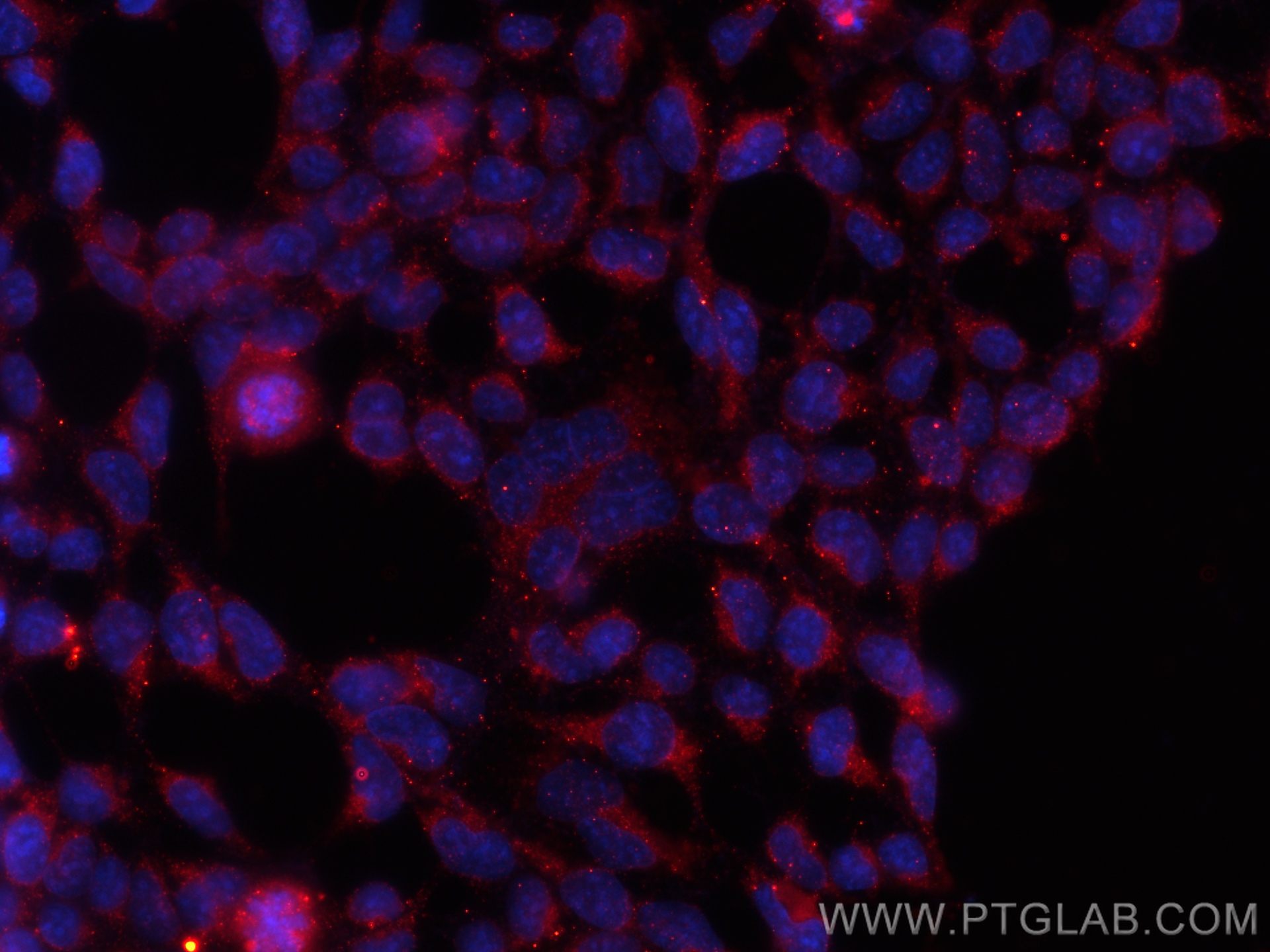验证数据展示
经过测试的应用
| Positive IF/ICC detected in | HEK-293 cells |
推荐稀释比
| 应用 | 推荐稀释比 |
|---|---|
| Immunofluorescence (IF)/ICC | IF/ICC : 1:50-1:500 |
| It is recommended that this reagent should be titrated in each testing system to obtain optimal results. | |
| Sample-dependent, Check data in validation data gallery. | |
产品信息
CL594-67763 targets GPX4 in IF/ICC applications and shows reactivity with Human, mouse, rat, rabbit, pig samples.
| 经测试应用 | IF/ICC Application Description |
| 经测试反应性 | Human, mouse, rat, rabbit, pig |
| 免疫原 |
CatNo: Ag30650 Product name: Recombinant human GPX4 protein Source: e coli.-derived, PET28a Tag: 6*His Domain: 107-197 aa of BC021567 Sequence: KQEPGSNEEIKEFAAGYNVKFDMFSKICVNGDDAHPLWKWMKIQPKGKGILGNAIKWNFTKFLIDKNGCVVKRYGPMEEPLVIEKDLPHYF 种属同源性预测 |
| 宿主/亚型 | Mouse / IgG2b |
| 抗体类别 | Monoclonal |
| 产品类型 | Antibody |
| 全称 | glutathione peroxidase 4 (phospholipid hydroperoxidase) |
| 别名 | Glutathione peroxidase 4, GPx 4, GPX4, GSHPx 4, MCSP, PHGPx, snGPx, snPHGPx |
| 观测分子量 | 20-23 kDa |
| GenBank蛋白编号 | BC021567 |
| 基因名称 | GPX4 |
| Gene ID (NCBI) | 2879 |
| RRID | AB_2920180 |
| 偶联类型 | CoraLite®594 Fluorescent Dye |
| 最大激发/发射波长 | 588 nm / 604 nm |
| 形式 | Liquid |
| 纯化方式 | Protein A purification |
| UNIPROT ID | P36969 |
| 储存缓冲液 | PBS with 50% glycerol, 0.05% Proclin300, 0.5% BSA, pH 7.3. |
| 储存条件 | Store at -20°C. Avoid exposure to light. Stable for one year after shipment. Aliquoting is unnecessary for -20oC storage. |
背景介绍
GPX4 (Phospholipid hydroperoxide glutathione peroxidase, mitochondrial) protects cells against membrane lipid peroxidation and cell death. Required for normal sperm development and male fertility.It has two isforms about 20KDa and 22KDa, respectively. GPX4 is a monomer,but it has a tendency to form higher mass oligomers (PMID:17630701). It presents primarily in testis.
实验方案
| Product Specific Protocols | |
|---|---|
| IF protocol for CL594 GPX4 antibody CL594-67763 | Download protocol |
| Standard Protocols | |
|---|---|
| Click here to view our Standard Protocols |


